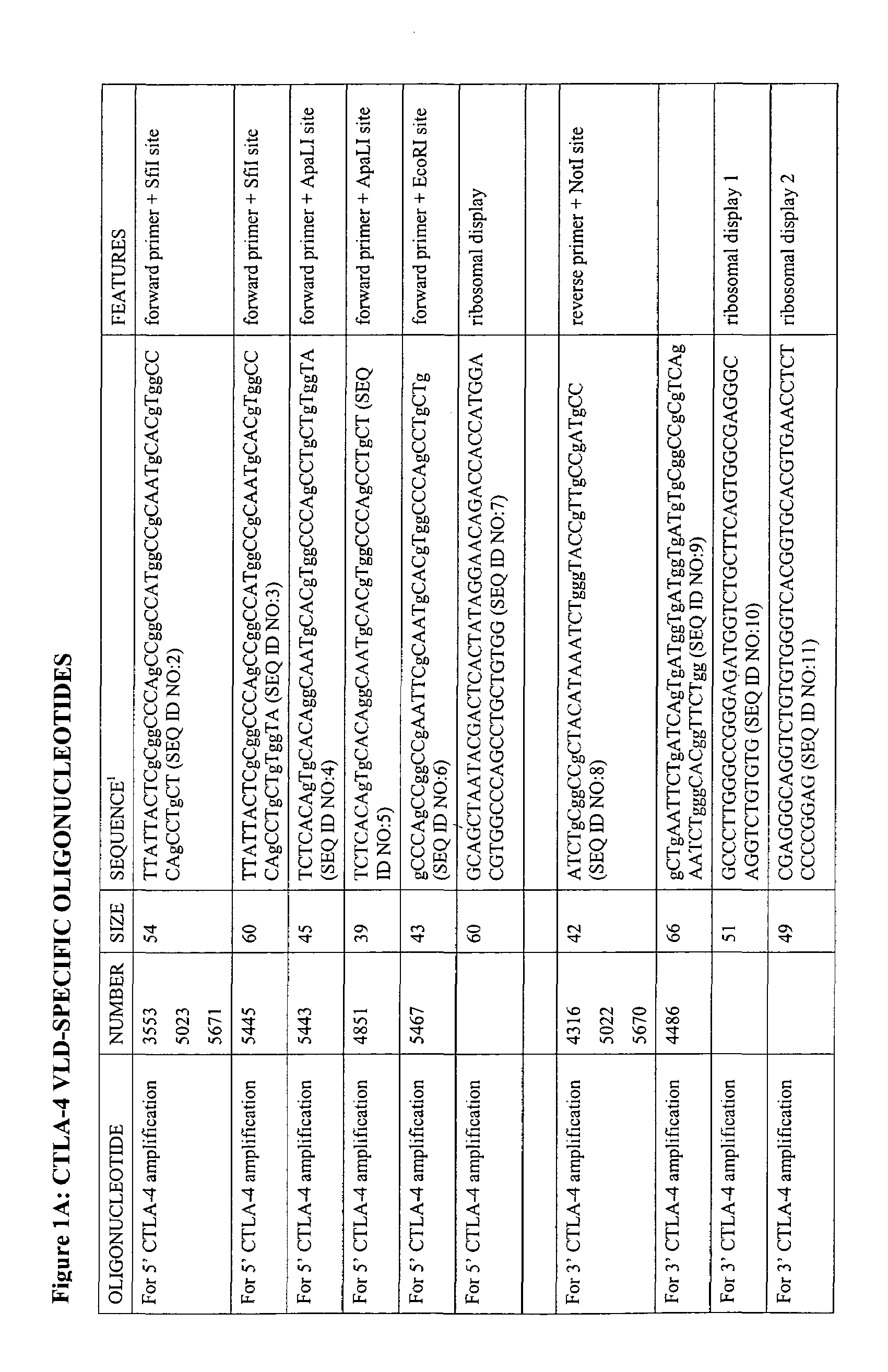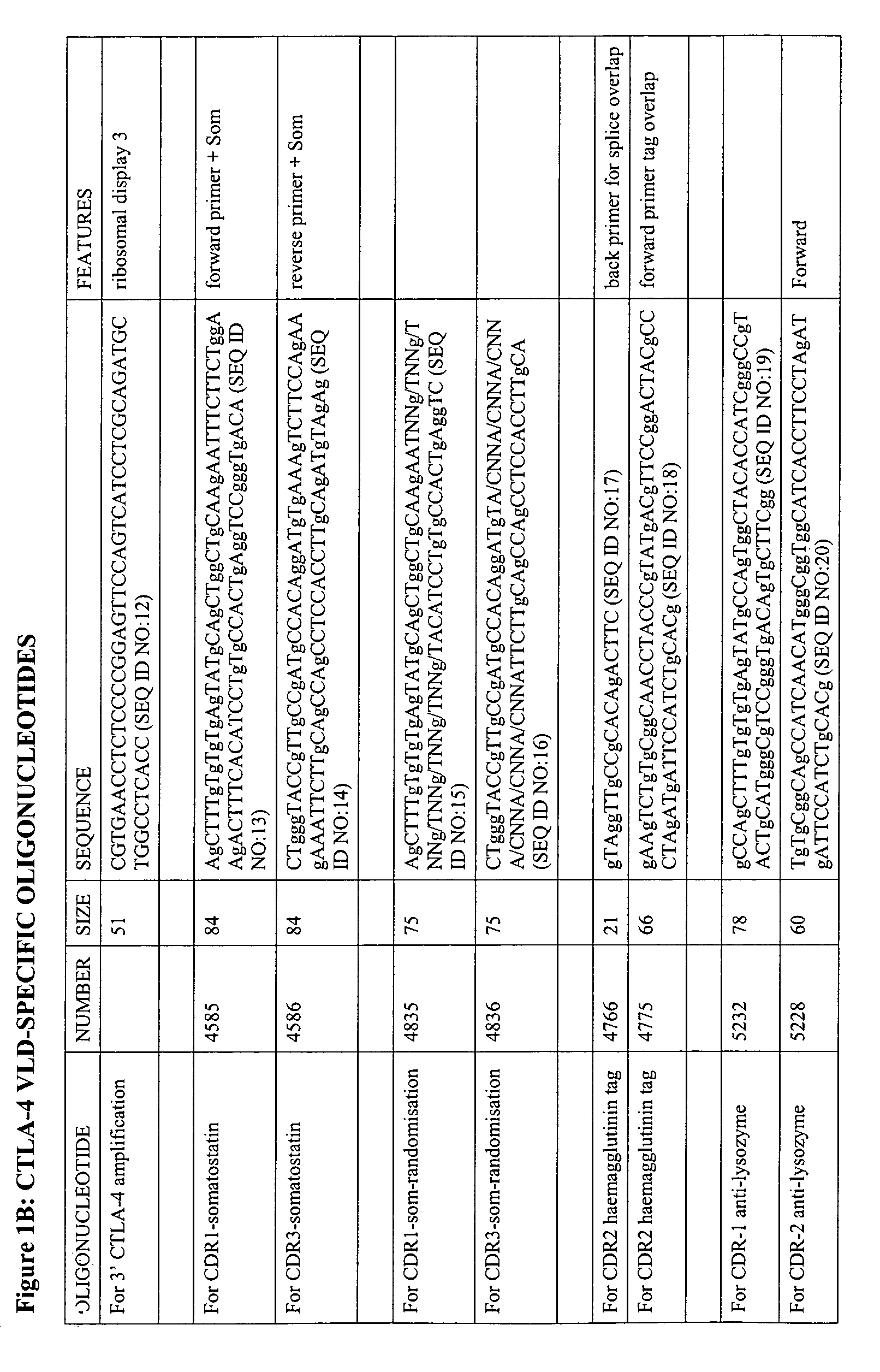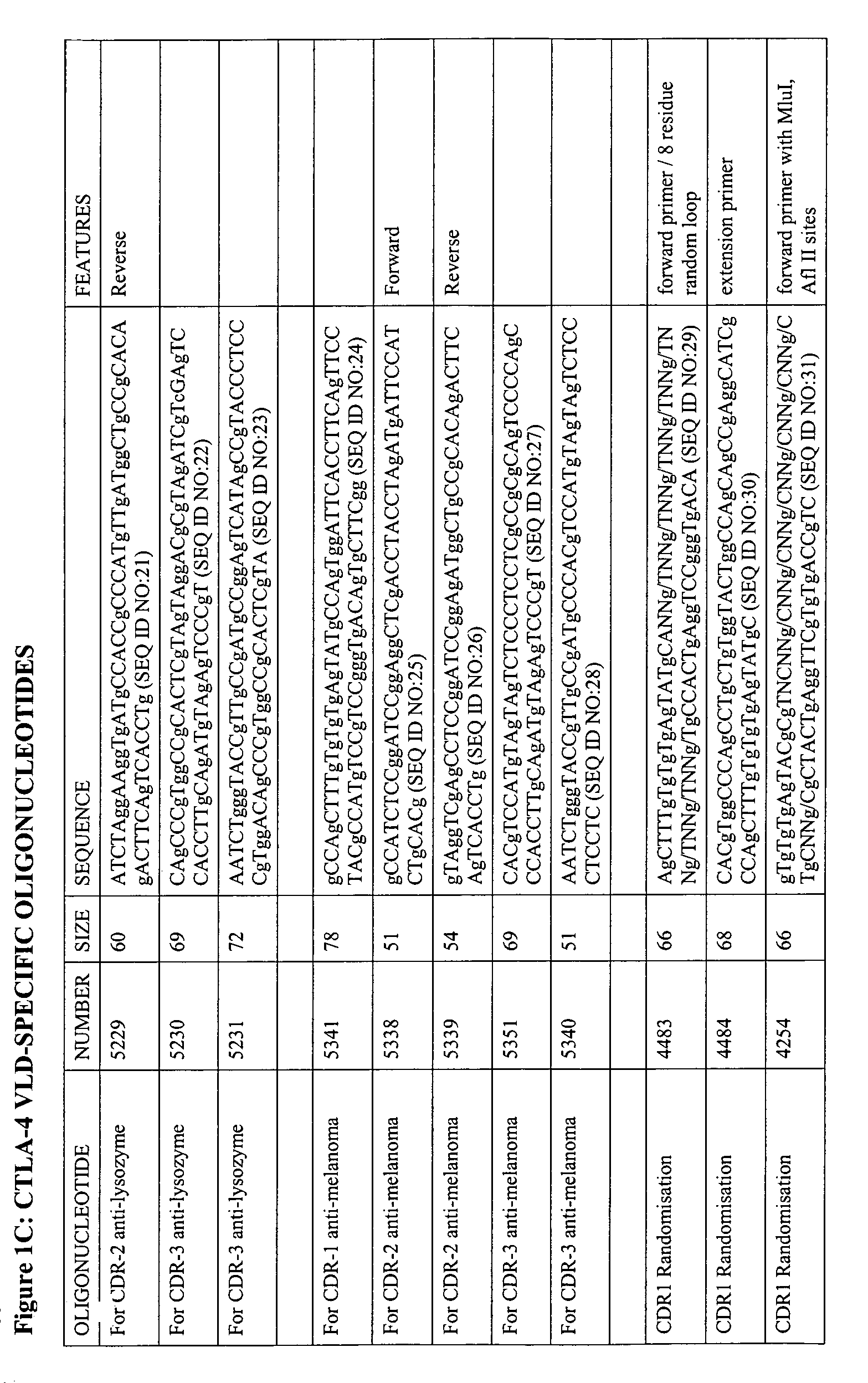V-like domain binding molecules
a technology of v-like domains and binding molecules, which is applied in the direction of peptide/protein ingredients, fusion polypeptides, bacteria, etc., can solve the problems of many attempts to engineer high-affinity single-domain binding reagents using either vsub>h /sub>or vsub>l /sub>domains alone, and achieves improved solubility and binding specificities.
- Summary
- Abstract
- Description
- Claims
- Application Information
AI Technical Summary
Benefits of technology
Problems solved by technology
Method used
Image
Examples
example 1
[0073]CTLA-4 STM (STM: soluble truncated mutants of CLTA-4, used herein to describe CTLA-4 chimaeric V-like domain proteins) gene construction and cloning was by standard and well-described techniques (Polymerase chain reaction with specifically designed oligonucleotide primers, splice overlap extension, restriction enzyme digests etc). A list of oligonucleotide primers used is given in FIG. 1.
[0074]The wild-type STM construct was amplified from cloned human CTLA-4 DNA (FIG. 2) (and could be similarly amplified from reverse transcribed human cDNA by a competent worker in the field) using the oligonucleotide primers #3553 and #4316, which incorporated SfiI and NotI restriction sites at the 5′ and 3′ ends respectively. These terminal primers were used in all further constructions except: (i) where #4851 or #5443 was used to incorporate an ApaL1 site at the 5′ end; (ii) where #4486 was used to add a C-terminal tail including residue Cys120; (iii) where #546...
example 2
Production and Isolation of Recombinant STM Proteins
[0081]Recombinant proteins were produced using vectors which represent different protocols for periplasmic expression systems. These vectors were (i) pGC: this vector allows high level expression of heterologous proteins by chemical (IPTG) induction, which are targeted to the periplasmic space by means of a leader sequence. The leader sequence is subsequently cleaved to produce the mature protein. In addition, this vector contains two in-frame 8 residue tag sequences (FLAG tags) which allow affinity purification of the recombinant protein. (ii) pPOW, which, like pGC, allows high level heat inducible expression of proteins targeted to the periplasmic space by means of a cleavable leader sequence and two in-frame 8 residue tag sequences (FLAG tags).
[0082]Recombinant proteins were purified by the following methods, which are but two variations of well established techniques. (i) Bacterial clones in vector pGC were grown overnight in 2...
example 3
CTLA-4 STMs Incorporating Somatostatin and Haemagglutinin Peptides
[0085]Initially the CDR1 or the CDR3 loop structures of the CTLA-4 STM were replaced with the somatostatin polypeptide. This 14 residue polypetide is conformationally constrained by an intra-disulphide linkage between Cys3 and Cys14 (FIG. 4). This was reasoned to form a discrete protein loop, analogous to the CDR loops found in antibodies, and particularly analogous to the long CDRs found in camelid antibodies which are also stabilised by a disulphide linkage. The effect of substituting CDR1 in the presence or absence of Cys120 ie, whether a dimer could be produced, was also tested. These experiments produced an unexpected and surprising result. Substitution of either CDR-1 or -3 with somatostatin significantly enhanced the production of monomeric protein. This is illustrated in FIG. 5 where replacement of the CDR-3 loop structure with somatostatin significantly increased the ratio of monomeric to dimeric / tetrameric p...
PUM
| Property | Measurement | Unit |
|---|---|---|
| Atomic weight | aaaaa | aaaaa |
| Atomic weight | aaaaa | aaaaa |
| Atomic weight | aaaaa | aaaaa |
Abstract
Description
Claims
Application Information
 Login to View More
Login to View More - R&D
- Intellectual Property
- Life Sciences
- Materials
- Tech Scout
- Unparalleled Data Quality
- Higher Quality Content
- 60% Fewer Hallucinations
Browse by: Latest US Patents, China's latest patents, Technical Efficacy Thesaurus, Application Domain, Technology Topic, Popular Technical Reports.
© 2025 PatSnap. All rights reserved.Legal|Privacy policy|Modern Slavery Act Transparency Statement|Sitemap|About US| Contact US: help@patsnap.com



